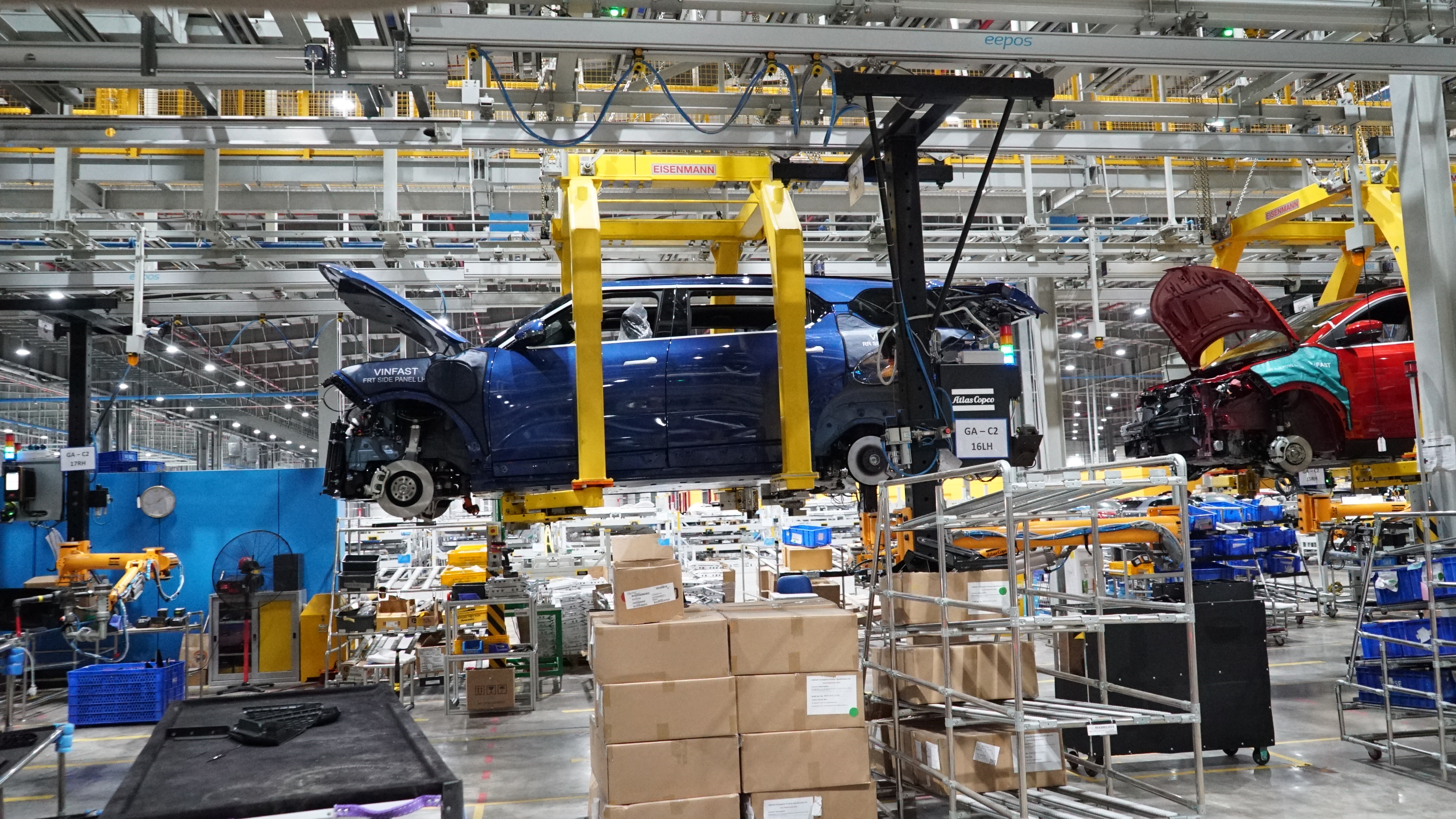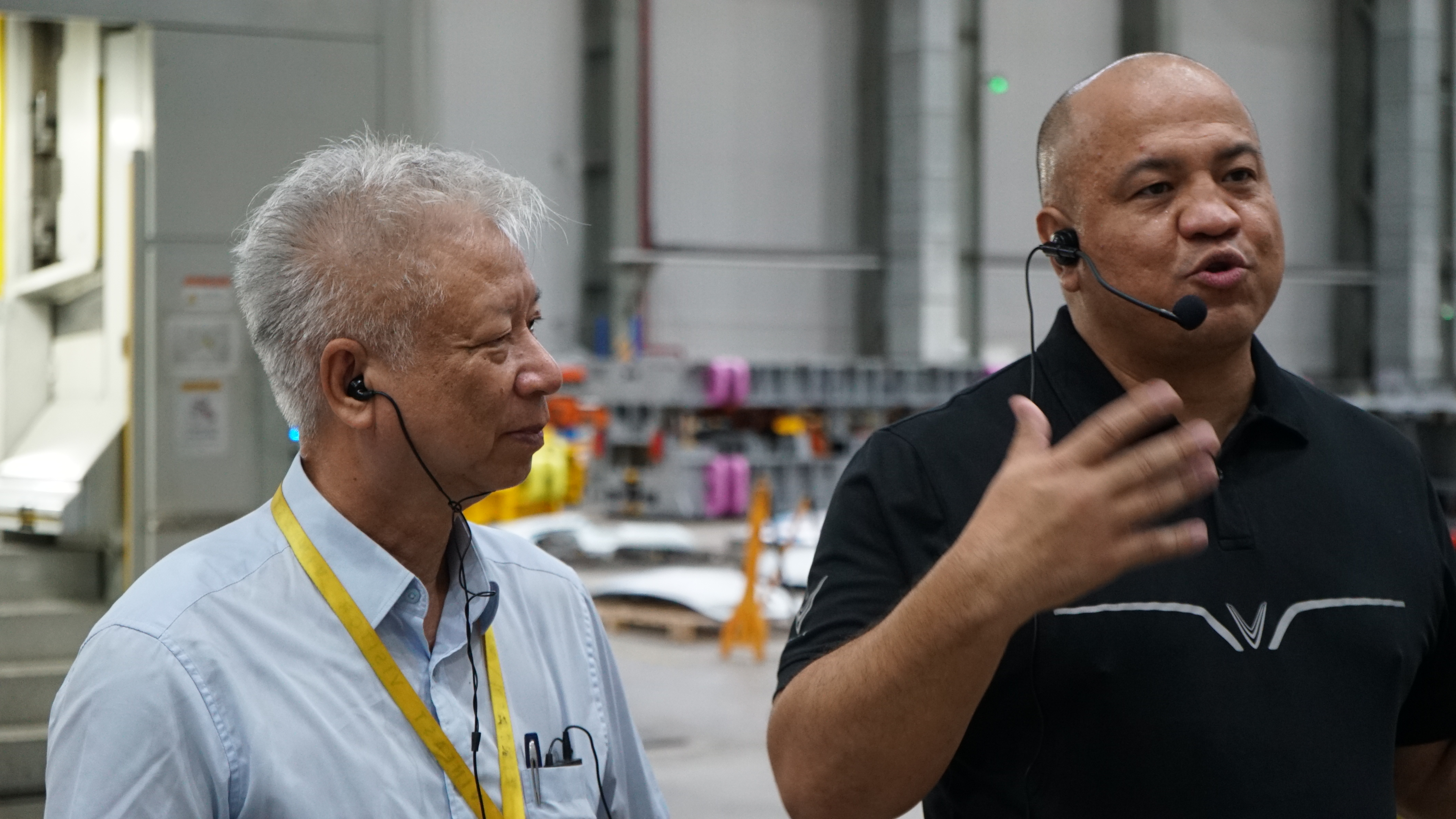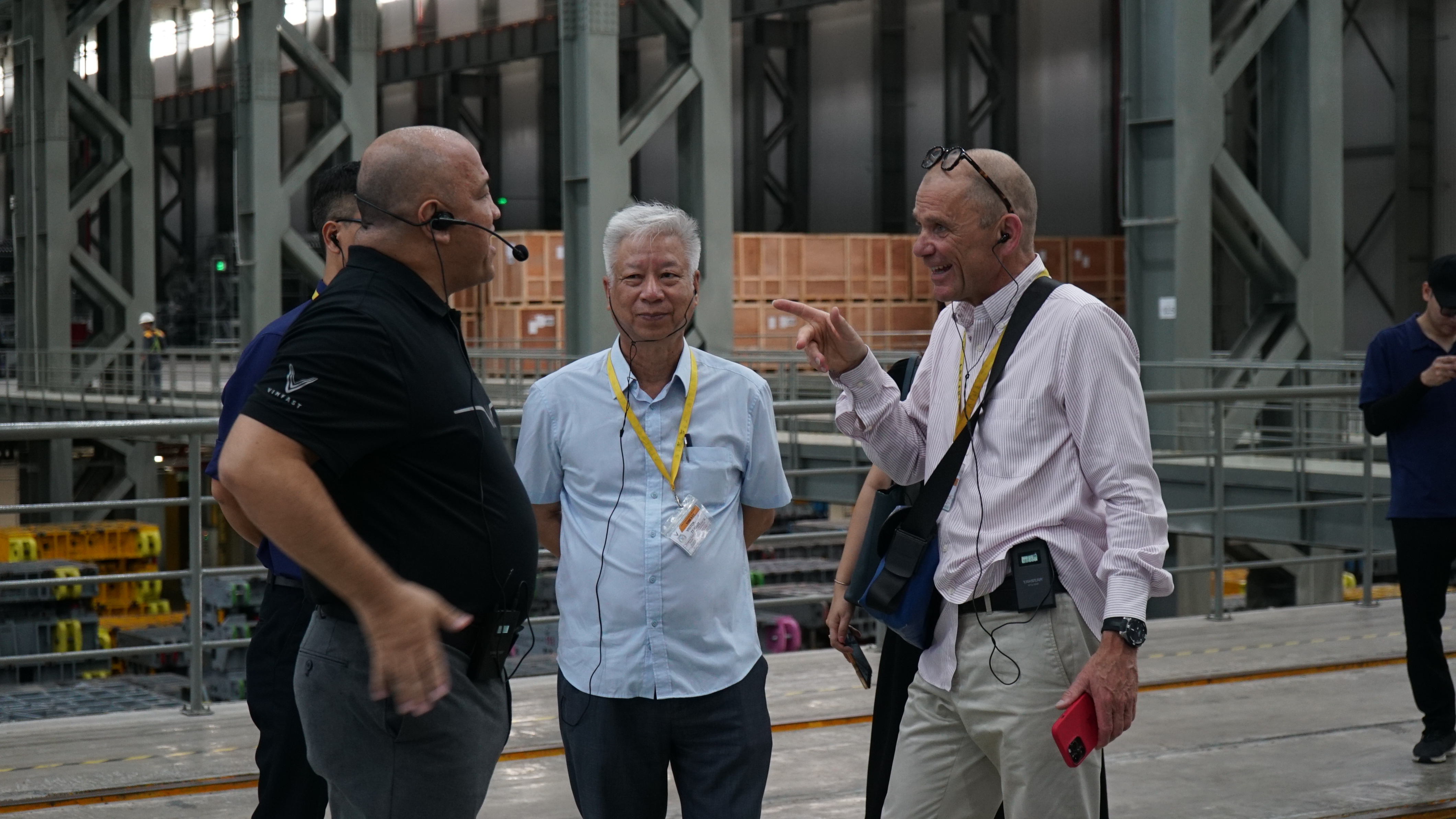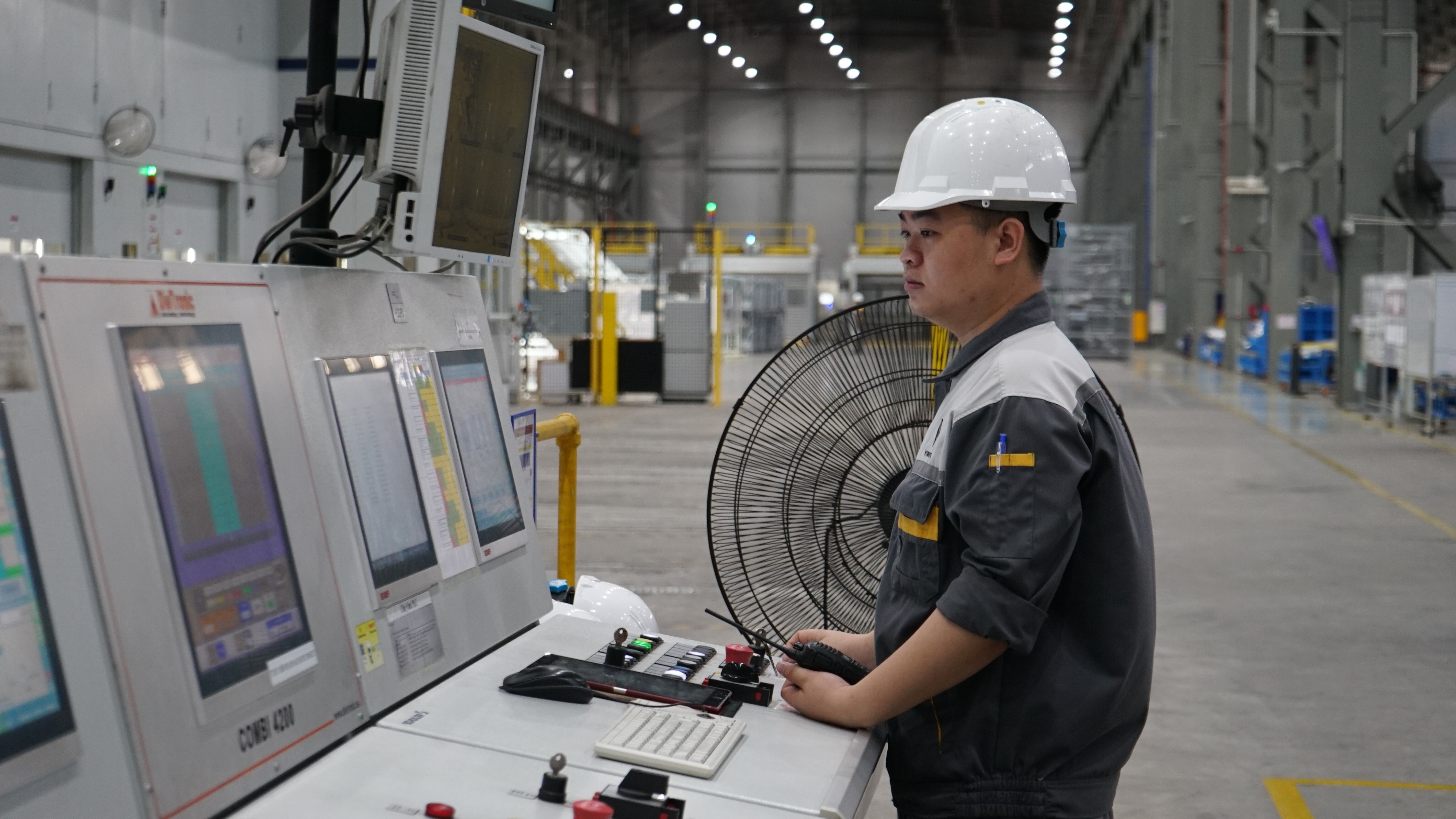We often talk about Vietnam as an interesting investment destination, with wages two to three times lower and a well-trained workforce. But, inside of VinFast factories, it is the 12,000 robots of the Swedish-Swiss company ABB getting the job done. To produce electric vehicles (EVs) capable of competing with Tesla, Hyundai, and Volkswagen it is necessary to be able to count on irreproachable quality that can only be achieved by machinery.
Such an abundance of technologies was unexpected. Built in record time, in the middle of rice fields near the port city of Hai Phong, VinFast’s new industrial complex covers 335 ha and will eventually produce some 950,000 EVs each year, from high-end SUVs to mini Smart cars announced for the end of 2024.

The ultra-modern VinFast factory’s production was around 4,000 units a month. The domestic market remains the main outlet for the time being, as the country’s car ownership rate stands at 23 per 1,000 people. On the chaotic streets of Hanoi and Ho Chi Minh City, the green taxis of the company launched by VinFast offer the best advertising for a brand that is also presenting itself as a champion in energy transition. But the international market, and the US and Europe in particular, is where VinFast wants to establish itself to take advantage of the global boom in electric mobility.
A delegation of Swiss parliamentarians also visited the VinFast factory at the end of June as part of a trip to Vietnam and Singapore, presenting an opportunity to become aware of Vietnam’s extraordinary industrial take-off and to restore momentum to negotiations over a free trade treaty with the European Free Trade Association (EFTA) launched several years ago.
The automotive bet taken by Vingroup is audacious. It reveals the aspirations of a country that is now positioned not only as one of the world’s leading producers of sneakers and t-shirts but also as a tech player to be reckoned with. Thus, it is in Vietnam that the largest smartphone factory in the world is located, that of Samsung, which has some 60,000 employees. And IT companies such as the Lausanne-based Elca group have been active there for a long time.

Vietnam is also one of the countries where solar has grown the fastest in recent years. It now accounts for 11 per cent of the national energy mix and contributes to reducing the importance of coal, which still represents 50 per cent of electricity generation. Records often go hand-in-hand, and the economy recorded 8 per cent growth last year; the highest of all Asian countries.
But enough of statistics. We know how difficult it is to break into the automotive market. And even if the electric revolution in the sector is leading to a vast redistribution of the playing cards, other competitors are still a few steps ahead. So, what are the newcomer’s chances of success?
In less than two years, VinFast has developed five different models using the best component suppliers and mobilizing the most advanced specialists in the sector from more than 40 different countries.

“We need to reinvent the way cars are developed and produced,” said Australian Benjamin Stuart, a veteran of General Motors. With what advantages? “It is not only about realizing the vision of of Vingroup, but that of an entire country.” VinFast’s development is actually a matter of national pride.
On the outskirts of the capital are Vingroup’s new urban areas, Ocean Park 1 and Ocean Park 2. Not far away, VinUniversity, the most expensive private training institution in the country, is also a Vingroup endeavor.
Since 2017, it has invested more than $8 billion in its VinFast venture. By considering the US market as a priority, the automaker did not choose the easy way. But the calculation is that whoever enters it successfully will then succeed everywhere in the world.

In Europe, VinFast began its journey in France, Germany, and the Netherlands, and delivered its first orders last September. Designed by Pininfarina and selling for €99,590 and €59,390, respectively, the high-end VF9 and VF8 models are indeed impressive. Though not specialists, we tested the two models in Hai Phong and can attest to this: the motorization, driving, and equipment are all up to speed. One thing is certain: the trajectory of VinFast, like that of the Vietnamese economy in general, will not be straight. However, with 100 million inhabitants, the country offers everything possible. The VinFast adventure and its elegantly-bodied SUVs will be experimental but the progress made is already impressive.
Thirty years ago, Mr. Alain Jeannet, an economics journalist, began his career as Chief Representative of Swiss media group Ringier in Vietnam, working on a cooperative endeavor between Vietnam Economic Times and the group.
He is now Editor-in-Chief of PME magazine in Switzerland and continues to write articles and commentary on the global economy in general and Switzerland’s economy in particular.
In June, on the occasion of Vietnam Economic Times’ 30th anniversary, he returned to Vietnam and visited the VinFast factory in Hai Phong then wrote an exclusive story for Vietnam Economic Times.









 Google translate
Google translate